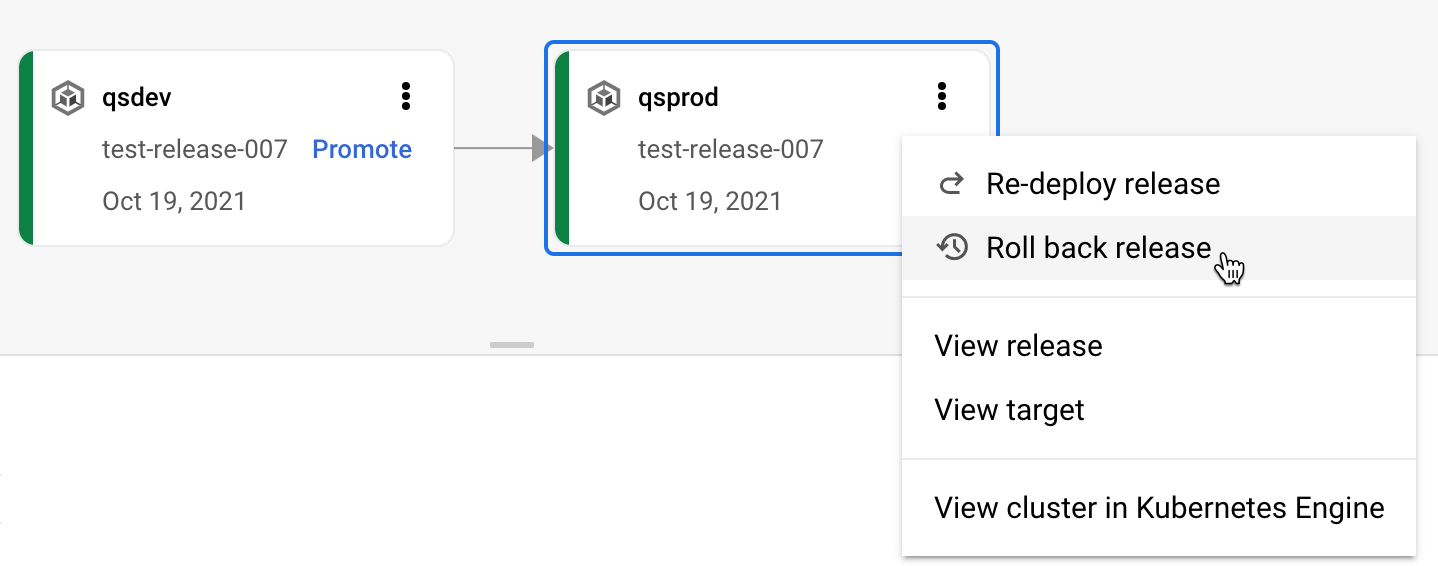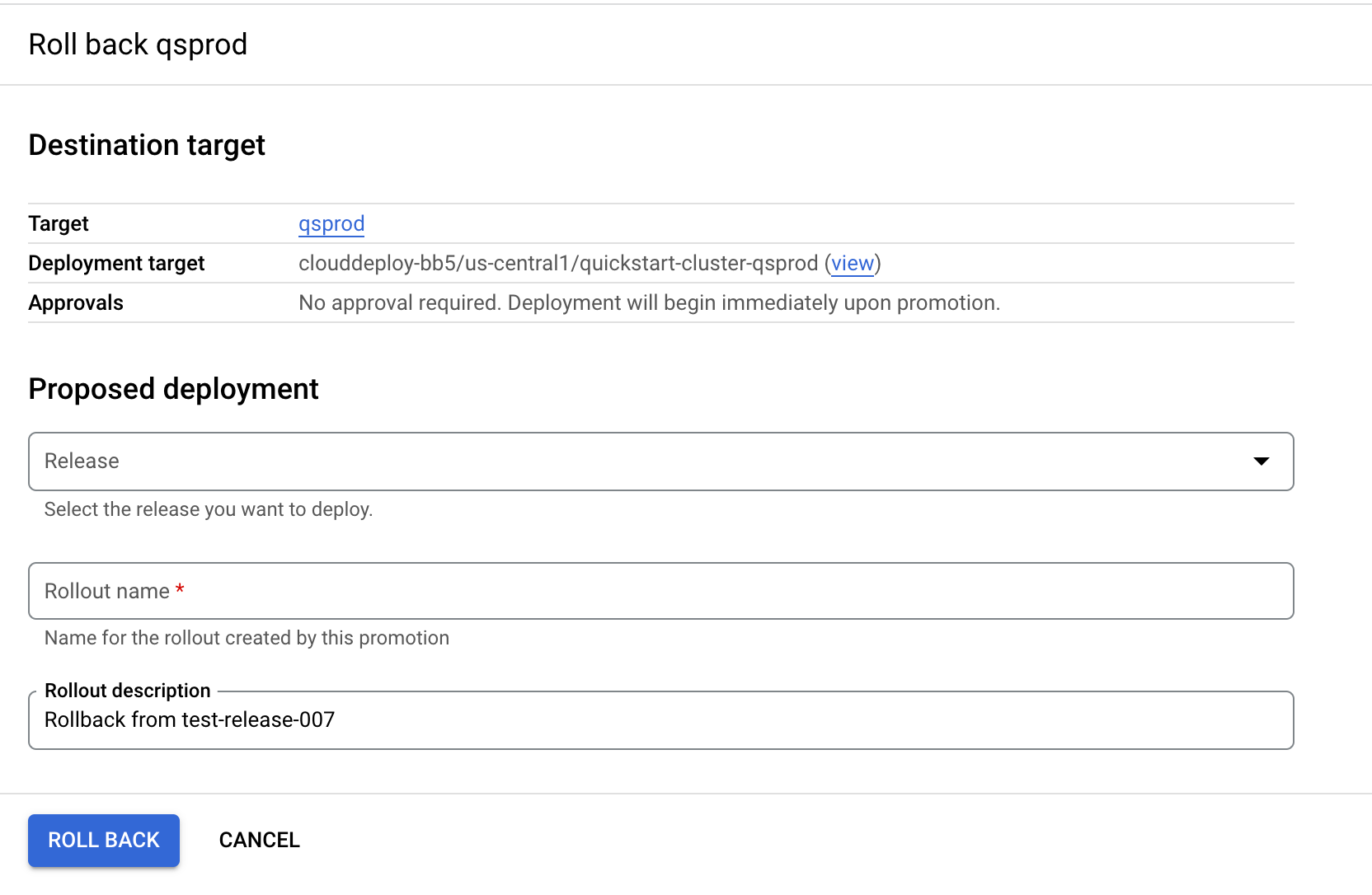Halaman ini menjelaskan cara melakukan rollback target Cloud Deploy ke rilis sebelumnya.
Saat Anda melakukan roll back target, Cloud Deploy akan membuat resource rollout baru berdasarkan rilis sebelumnya.
Me-roll back target ke rilis sebelumnya
gcloud CLI
Secara default, rollback menggunakan rilis terakhir dengan peluncuran yang berhasil ke
target yang ditunjukkan, tetapi Anda dapat memilih rilis lain, menggunakan --release.
Untuk melakukan rollback, jalankan perintah berikut dari direktori yang berisi pipeline pengiriman Anda:
gcloud deploy targets rollback TARGET_NAME \
--delivery-pipeline=PIPELINE_NAME \
--release=RELEASE_NAME \
--rollout-id=ROLLOUT_ID
Dalam perintah ini, --release dan --rollout-id bersifat opsional.
Gunakan --release untuk mengidentifikasi rilis tertentu yang akan di-roll back. Jika Anda menghapus
opsi ini, Cloud Deploy akan menggunakan rilis baik yang terakhir diketahui
ke target yang ditentukan.
Gunakan --rollout-id untuk menetapkan ID ke rollout yang dihasilkan. Jika Anda menghapusnya, Cloud Deploy akan membuat ID untuk rollout yang dihasilkan.
Konsol
Klik pipeline yang ditampilkan dalam daftar pipeline pengiriman.
Halaman Detail pipeline pengiriman menampilkan representasi grafis progres pipeline pengiriman Anda.
Klik menu lainnya
 , lalu pilih Roll back release.
, lalu pilih Roll back release.
Formulir rollback akan ditampilkan:

Pilih rilis dari kolom Rilis.
Rilis ini adalah rilis yang Anda roll back. Nama peluncuran diisi berdasarkan rilis yang dipilih.
Jika mau, Anda dapat mengubah nama peluncuran dan deskripsi peluncuran dari default.
Klik Roll back.
Peluncuran baru dibuat dari rilis yang dipilih, dan di-deploy ke target yang sama.
Melakukan roll back lebih jauh
Anda dapat melakukan rollback secara manual ke rilis yang lebih lama daripada rilis terakhir yang berhasil di-deploy.
Cukup jalankan gcloud deploy releases promote dengan rilis sebelumnya dan
sertakan opsi --to-target yang ditetapkan ke target tempat Anda ingin melakukan rollback
rilis.

